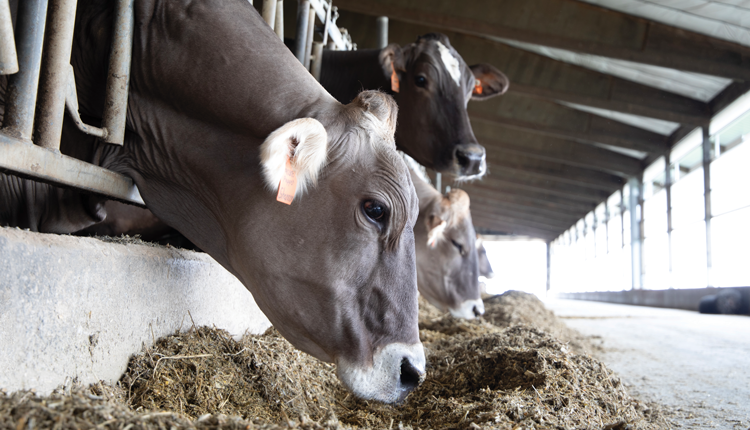
Strategies to mitigate greenhouse gas emissions have been widely sought after by many industry sectors. The dairy industry is no different and has many ongoing efforts in search of a solution for this challenge. Dairy cows contribute to greenhouse gas emissions primarily through enteric methane emissions as well as manure handling.
Mitigating enteric methane emissions could benefit producers by improving energy and feed utilization. Methane is a natural outcome of the ruminant digestion system, and this issue is caused by methanogens. These microorganisms combine end products of rumen fermentation into methane. Enteric methane production corresponds to up to 12% losses in gross energy utilization by ruminants. Partially rerouting this energy toward milk production or other physiological needs may improve efficiency and sustainability altogether.
Supplementing feed additives with anti-methanogenic properties has garnered the most interest from the industry. Relying on feed additives would be the easiest nutrition intervention to be implemented on farm as these additives account for less than 1% of the diet. At the same time, supplementation of methane inhibitors is the most efficient nutrition intervention as some of these additives (such as 3-nitrooxypropanol and bromoform from red seaweed) have the potential to mitigate emissions by 30% or more.
Experimenting with starch
Even though feed ingredient manipulation is less likely to promote as high of a response, the implementation of other dietary strategies may combine methane reduction with benefits in performance and efficiency. Improvements in performance and efficiency are not commonly observed for methane inhibitors.
Feeding more starch is one of these dietary strategies. Starch has a faster ruminal degradation rate and consequently, higher availability of energy precursors compared with other carbohydrates such as fiber. Besides, ruminal fermentation of starch and fiber have propionate and acetate, respectively, as the most prevalent end products. Fermentation into propionate yields less methane than acetate.
Last summer, we conducted a study evaluating the replacement of high-moisture corn with soy hulls on performance and methane emissions by dairy cows. Nutrient composition was similar between both diets, except for starch (28.5% and 22.5% for the high-moisture corn and soy hull diets, respectively) and neutral detergent fiber (32% and 27%, respectively). Cows were fed these diets for 12 weeks. The diet with more starch resulted in greater efficiency as cows produced the same amount of milk while consuming 2 pounds less dry matter. As expected, though, milkfat concentrations dropped when cows consumed more starch. These responses are consistent with our previous trials comparing dry ground corn with nonforage fiber sources. Feeding more starch reduced methane emissions (grams per day), milk yield (as a proportion of dry matter intake), and intensity (as a proportion of milk produced). But the response was less than 10%.
Could we raise starch concentrations even further? A recent study from Penn State University evaluated diets containing starch concentrations from 10% to about 40%. Even though reductions in methane emissions continue to climb along with dietary starch, milkfat concentrations also fell. Formulating diets with more than 30% starch should be done cautiously as excessive starch depresses milkfat, impairs fiber digestion, and could create a scenario of subacute ruminal acidosis. Besides, starch concentration does not tell the whole story, and accounting for the degradability of starch would be required.








